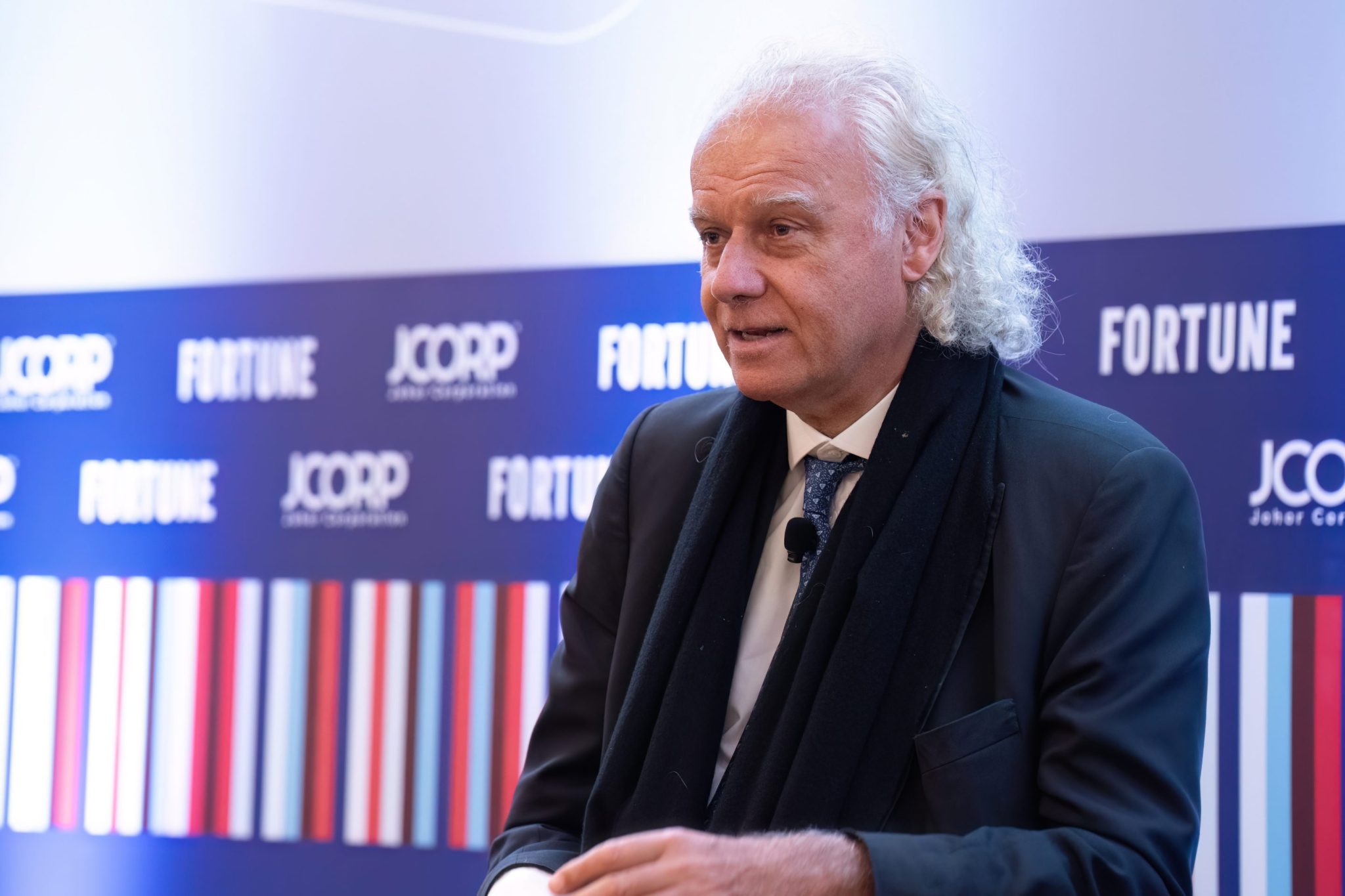
Christopher Wood has a track record of spotting speculative bubbles. He called the dotcom boom, Japan’s credit bubble and the U.S. housing bubble before many of his contemporaries. So when he warned of an “AI capex arms race” at the Fortune Innovation Forum in Kuala Lumpur, Malaysia on Tuesday, the audience paid attention.
Wood, now the global head of equity strategy at Jefferies Hong Kong, said that the arms race began in 2023 when Microsoft invested in OpenAI. He argued that investors are missing a crucial point: That nearly all the money made so far is accruing not to the companies building AI products, but to those selling the infrastructure behind them.
“You want to own what I call the picks and shovels of AI,” Wood said. It’s companies like Nvidia, those producing semiconductors and building data centers, that have made real profits from the AI boom.
“But it’s completely unclear to me who’s going to monetize and make money out of all this capex,” Wood continued.
This sets up what he views as an almost-inevitable over-investment bust—though when markets finally lose patience with ballooning spending without results is unknown.
Wood’s already repositioned his own portfolio. He recently sold his Nvidia holdings, not necessarily because he believed shares have picked, but because their five-fold gains already priced in extraordinary expectations.
His AI exposure is now concentrated in China, where he believes companies are approaching the technology more pragmatically. “You need two things to do AI: compute and energy,” he said. “The Chinese are far more ahead in energy than the U.S. is ahead in compute.”
While the U.S. still leads in terms of the power of its advanced chips, Washington’s semiconductor export controls, in place since late 2022, may have inadvertently strengthened China’s position. By cutting Chinese firms off from U.S. chips, the policy both deprived American tech companies of their biggest customers and jolted Beijing into accelerating its domestic semiconductor ecosystem.
“[Nvidia CEO Jensen Huang] has made it quite clear that Huawei is a much more formidable competitor than was the case three years ago,” Wood noted, adding that controlled Nvidia chips had made their way to China anyway through secondary channels, despite U.S. controls. “It’s a massive own goal.”
Huang has repeatedly praised Chinese chipmakers, including Huawei. He called the Chinese tech giant “one of the most formidable technology companies in the world” in April.
China’s AI strategy is also diverging from the U.S. Rather than chase the elusive goal of artificial general intelligence, Chinese firms, spurred by successes like DeepSeek, are channeling resources toward practical, commercially viable applications, many built on open-source models. “They’re not trying to build the perfect LLM,” Wood said. “It’s all about applications.”
U.S. tech giants, by contrast, are pouring money into parallel efforts to build proprietary frontier models, a shift that is fundamentally altering their economics. For years, Big Tech companies rested on “asset-light” business models, each in their own space. Now, Wood said, the hyperscalers are competing in the same AI space while moving to “asset-heavy” models.
Other panelists at the Fortune Innovation Forum echoed Wood’s comments on China’s AI strategy. “China is focused a bit more on diffusion, while the U.S. focuses more on perfection,” Chan Yip Pang, executive director at Vertex Ventures SEA and India, said on Monday during a discussion on the competition between open-source and closed-source models.
Why are U.S. tech giants spending so much? Opportunity is one answer. Fear is the other. “They’re terrified of being disrupted,” Wood said. “There’s massive FOMO. That’s what’s driving this arms race.”















